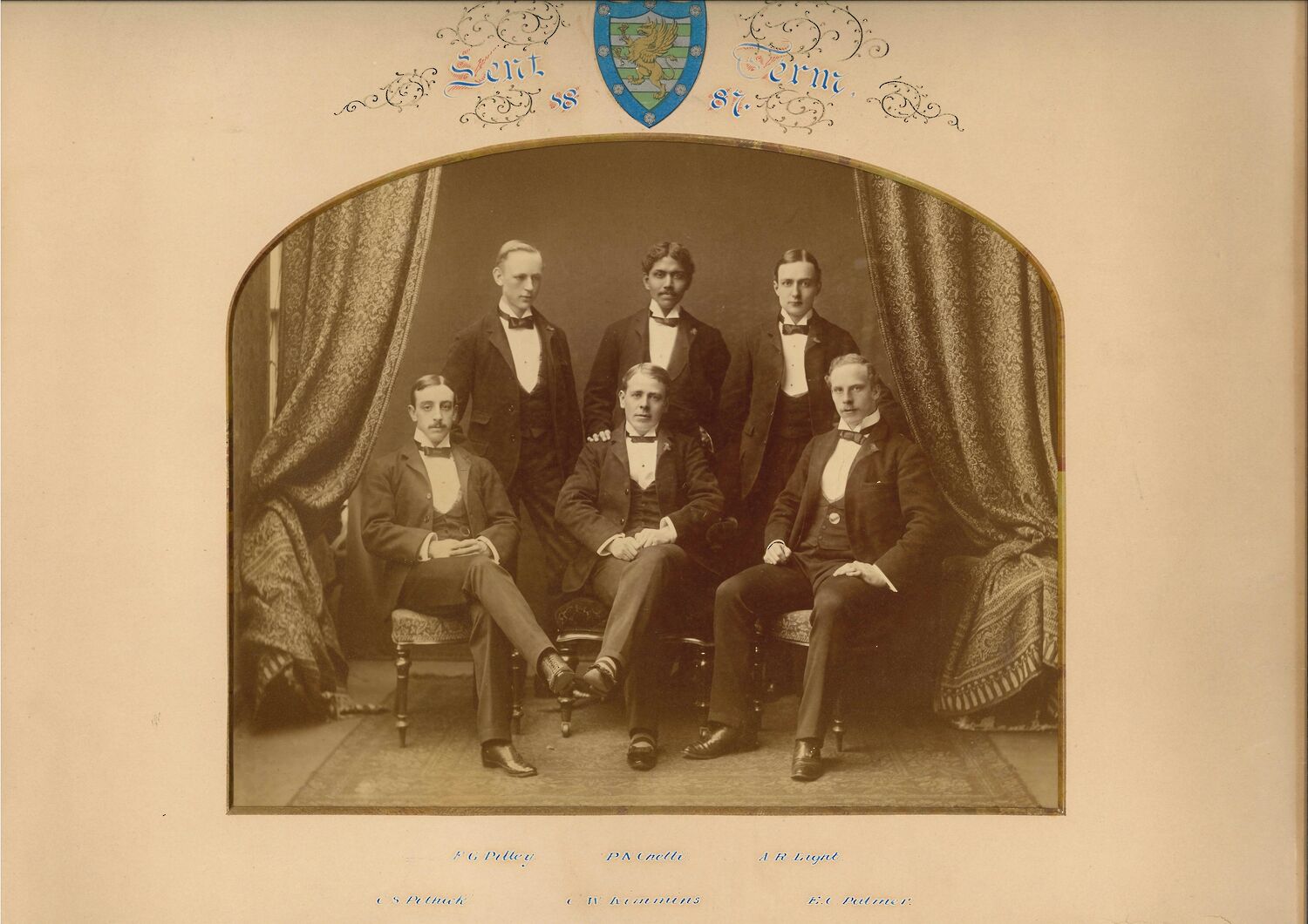A letter dropped to the floor of the Master’s Lodge on the 22nd of March, 1909. It was postmarked ‘Whitehall: India Office’, and it politely told Master Frederick Marsh to deal with “a situation”. The number of admissions of students from India to Downing College, Cambridge, was high, and rising. “I should not venture to press the matter upon you in this way,” read the letter, “if the subject were not of real importance from the point of view of Indian Government.”
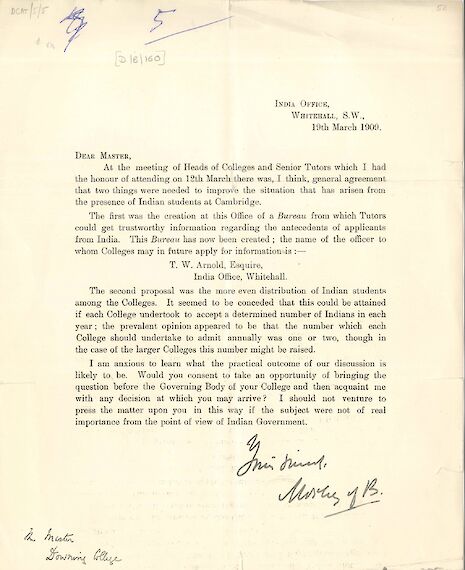
In 1909, there were around 90 Indian students at the University, mostly the sons of colonial civil servants, lawyers and Maharajas. The Government’s concern arose from the ideas and connections that these men – good boys and potential pillars of British rule in India – were making during their time at Cambridge. Many would leave as revolutionaries, ‘trouble-makers’ and independence advocates; even if their actions at University pale in comparison to the sedition and activism in India in the 30s and 40s, it was here that this elite group, previously spread across the subcontinent, first met.
The order to cut down the numbers was from Lord Morley, the Secretary of State for India, who initiated the “proposals” as supporting the Government’s “prevalent opinion” on Indian student numbers. Just over three weeks previously, Morley had spoken in the Lords, denouncing with shrill warning “the extremists, who nurse fanatic beliefs that they will someday drive us out of India,” and wanted to take action in British universities. He couldn’t have known how right he was: in just over 40 years the British would have left India entirely.
The letter from Whitehall, brought to light by Dr. Tersea Segura-Garcia during research in the college archives in 2015, demanded that admissions for Indian students coming to take civil service and law exams be reduced to two per college per year. Prof. Marsh was in a difficult position: Downing admitted one third of all Indian students as the College’s heavy focus on Law drew many applications from the Empire.
Marsh, remarkably, wrote back to Whitehall that Downing would not be reducing the number, and that it would be a “rebuff” to Indian students to do so. It was a decision which would have important consequences for the fate of Indians at Cambridge, and of the then small city of Chittagong, at the mouth of the Karnaphuli river in Bengal.
Jatindra Mohan Sengupta was born in Chittagong in 1885. The theme of his early childhood was death: his elder brother died just weeks after getting married, his elder sister drowned in the village tank, and his younger sister was stillborn. Jatin, as he was known to his family and friends, was the golden boy, the one who had survived in place of his buried siblings, and spent his childhood in Bengal with his books, removed from life’s necessary labour. For tuition, he was first sent to the village school, and then South Suburban School and the Hare School, passing the entrance examination to Presidency College, which admitted students from the wealthy and progressive Hindu community.
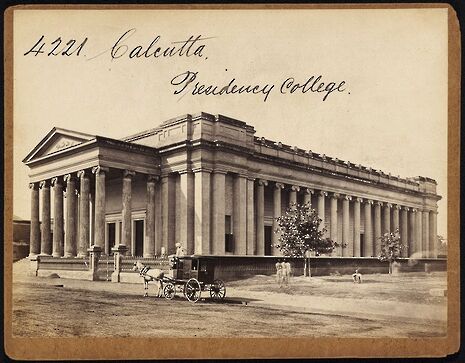
What was life like in rural Bengal and Calcutta for an upper class family? Professor Joya Chatterji, Director of the Centre for South Asian Studies and a fellow at Trinity College, told me that the area “would have been relatively lightly administered” by the Empire. Jatin’s “family, being the elite family they were, are likely to have known who the district magistrate was.” Professor Chatterji’s own family, also from Bengal, had a similar experience: “For instance, my family knew very well who the district magistrate was for our district in north Bengal, which was equally far flung, so my father used to play football with him. Even though there was civil disobedience, they would have had pretty good social relations often with British district magistrates.” It is hard to know exactly how Jatin would have understood the British Empire, but it was unquestionable that if Jatin (or his father) wanted a position within the elite of colonial Indian society, a British university education was the only option. He was about 17 at the time barristers at his father’s chambers advised him that his son should do a degree in England, possibly at Cambridge. Jatra Sengupta who had, according the Jatin’s biography, “increased in [Jatin] the sense of responsibility for his family”, needed little persuasion.
It was either the best time for Jatin to go to university, or the worst. The relatively peaceful situation didn’t last long between the British and the local Bengali population. On the 16th of October 1905, a matter of days after Jatin matriculated, the Viceroy of India, Lord Curzon, partitioned Bengal into two separate administrative areas: Muslim majority ‘Bengal’, with Calcutta as its capital, and Hindu majority ‘East Bengal and Assam’, which covered Jatin’s village south of Chittagong. Curzon’s decision would have disastrous effects for Bengal: families were split up, communities turned on one another in a grab for power. In many ways the situation anticipated the horror of the partition between India and Pakistan 40 years later.
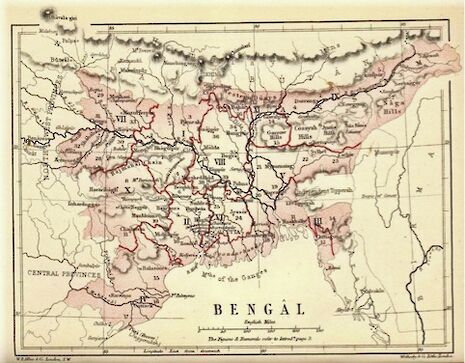
The partition sparked the swadeshi movement, a student-led boycott movement which would be the seed from which later independence movements would grow. Bengal became fractured between competing groups. Many of the young men who Jatin had watched toil on his father’s land joined the Anushilan Samiti, an organisation committed to revolutionary political violence as a means to end British rule in India. Sitting in his cold room in the crisp East Anglian midwinter, Jatin could have felt like he had escaped the unrest back home, the rush of first year a welcome distraction from an overbearing father and a troubled nation. Or he may have worried obsessively, cut off from his family at the very time they were most in danger.
Friends
That the Indian community at Cambridge was teaming with resistance, debate and anti-colonial feeling was not obvious on the surface. At first glance the Indians in Cambridge, including Jatin, were a proud, ambitious and elitist set, just as superior as many of their British contemporaries. Elite Indians had been brought up benefiting from the Empire, and were given little reason to question the status quo. Most had attended either English public schools, such as Harrow or St. Paul’s, or schools based on that model in India, like Jatin’s Presidency College. They lived in Indo-Saracenic mansions in Mumbai and Vadodara, in the pink palaces of Jodhpur, removed from the disastrous effects of the British Raj. Matriculating alongside Jatin at Downing was Prince Fatehsinhrao, heir of the Maharaja of Baroda, the leading princely state of western India. In the year below was Dharam Narain Kak, whose father was the minister to the Maharaja of Jodhpur.
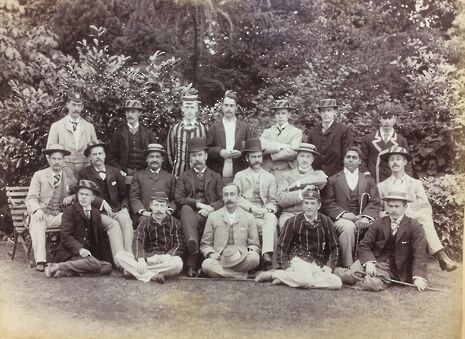
Yet Jatin was soon swept up in Indian nationalist politics at Cambridge. The list of his fellow students is telling: there was the future first Prime Minister of India, Jawaharlal Nehru, two years below at Trinity; freedom fighting barrister Saifuddin Kitchlew at Peterhouse; the architect of the Lucknow Pact Syed Mahmud (studying History under Sir John Seeley, of library fame), at Christ’s. Bengali spiritualist and rebellious civil servant Gurusaday Dutt was at Emmanuel. Dutt and Jatin were particularly close; not only were they both like-minded Indians studying at the same foreign university, but they both had attended Presidency College (Dutt was only two years above), and they were called to the Bar together at Grays’ Inn. In Jatin’s biography, written by his niece several years after his death, Dutt is favourably mentioned as one of his closest friends. He passed his civil service exams with distinction, moving back home to work in the British administration, and in 1905 married Saroj Nalini De, a feminist activist and secretary of the Calcutta League of Women’s Workers. Dutt was later imprisoned by the British for disobeying orders to quell Gandhi’s Salt March.
Majlis
The civil service was the career of choice for driven young Indian men at the time, but entrance exams were held only in Britain. It was a method of control for the India Office to shut Indians off from decision making. Jatin, too, had once wanted to take the civil service exams, but his father prevented him. Shrewd Jatra Sengupta knew what it would mean to be a circar and for his son to serve in the colonial administration: assimilated with the corrupt British elite, while never being seen as quite equal, thanked for executing colonial policy, but laughed at and mocked by the sun-burnt Europeans. George Orwell’s first novel, Burmese Days, follows John Flory, a colonial policeman, skewering the racial hatred which whirred underneath Anglo-Indian relations:
“In the end the secrecy of your revolt poisons you like a secret disease. Your whole life is a life of lies. Year after year you sit in Kipling-haunted little Clubs, whisky to right of you, Pink’un to left of you, listening and eagerly agreeing while Colonel Bodger develops his theory that these bloody Nationalists should be boiled in oil. You hear your Oriental friends called ‘greasy Little babus’, and you admit, dutifully, that they are greasy little babus… The time comes when you burn with hatred of your own countrymen, when you long for a native rising to drown their Empire in blood. And in this there is nothing honourable, hardly even any sincerity.”
Professor Chatterji describes “a cultural encounter, in which one side is much less powerful than the other, so there may not be many instances of direct discrimination. We don’t have somebody being thrown from a train.” The documents from this period place emphasis on integration between the two communities. When Raghunath Paranjpye became the first ever non-white Senior Wrangler at the University, receiving the top mark in the Mathematics Tripos in 1899, Mr. Wheatcroft, from Downing College, is quoted in the Cambridge Daily News article as saying that “[Rudyard] Kipling and Paranjype were both engaged in the work of making closer the bond between England and India.”
Archived photos from the time certainly show an intimacy between white and Indian students at Downing, all dressed up in fine dinner wear, white tie or rowing jackets. Jatin’s biography mentions no struggle with racism, and we can only guess how much this narrative romanticises the general attitude of the time. No matter how integrated the Indian students were with their English peers, it remains clear that they had a clear sense of their own identity and community. The perfect place to air any anxieties were the Majlis, the Indian debating clubs.
The documents from this period place emphasis on integration between the two communities
Named after the Persian word for assembly, the Majlis became the crucible for Indian politics at Cambridge: part social club, part debating society, part activist group, dozens of influential nationalist agitators would be a member at some point or another in the early 20th century. “Everybody who was anybody was part of the Majlis”, said Professor Chatterji, “Many of the political issues of the time were debated … In a sense, these people would never have come into contact with each other at home.” They had dinners with their counterpart in Oxford, and invited guest speakers; E. M Forster, author of A Passage to India, once gave a talk (it was so good he was unanimously elected an honorary member on the spot). John Maynard Keynes, another of the Bloomsbury group, gave talks to the anti-imperialist Majlis in Jatin’s first year but then left to join, somewhat surprisingly, the India Office in Whitehall. Keynes, who returned to Cambridge regularly during Jatin’s time, had worked in the very office which sent Morley’s order to reduce the number of Indian students to Downing in 1909. He resigned, returning to Cambridge, the Majlis, and economics.
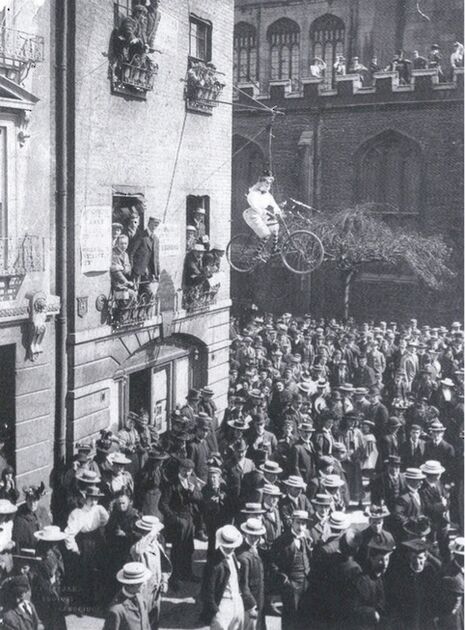
Cambridge was less interested in teaching imperial governance than Oxford. I spoke to Dr. Emily Rutherford, currently researching for a PhD on British universities at Columbia University, who described a student population indifferent to the Majlis: “The biggest things going on in Cambridge around 1905 were about curriculum and about gender.” Many of these arguments seem quite quotidian: “you had very heated arguments among academic staff… about, for example, whether all students who matriculated should be required to demonstrate competency in Greek; what kinds of funding would be allocated to science labs and how centralised science teaching would relate to the college system”, she told me. “In the second place, you had equally heated arguments about whether to allow students of Girton and Newnham to take degrees. Even in 1905, most academics were in favour of increasing equality, but most alumni and students were against, and between the 1880s and 1948 [when degrees were finally granted to women] there was a series of campaigns and Senate votes on the subject that in some cases resulted in mob violence.”
Despite its prestigious speakers, the scene around the Majlis wasn’t for everyone. The society was founded in the late 19th century, with Jatin becoming President in 1908, and its success in those years reflected an exigency to talk about Britain’s control of India. But attendance remained small: the club was patronised by intelligent speakers, passionate about a niche cause. The most important thing to happen to Jatin wouldn’t happen in the debating clubs of central Cambridge, but in a pokey terraced house on Herbert Street, Chesterton.
Nellie
Edith ‘Nellie’ Gray was born on the 12th of January 1884 in Cambridge, and died in 1973 aged 88 in Calcutta, India. Her father, Frederick William, worked in a local club. Her mother, Edith Henrietta, was known to the family and the local community as ‘Aunt Hettie’. Jatin’s biography says that she “was a gracious and kind lady and often used to invite Indian students over to her home, knowing that most of them were homesick and lonely.” This might be true, but it was likely also a good way to make some extra cash.
Space was at a premium in Downing, in part because huge sums had been lost before the foundation of the College in a protracted legal dispute involving the widow of the last Downing baronet, a case unsolved for decades. It outsourced some of its accommodation, and one of these students sent off-site was Jatin, who lived with the Grays on Herbert Street in his final year at Cambridge. Edith and Jatin quickly became close. “There were a lot of flirtations between the landladies’ children, their daughters, and the Indian students”, Professor Chatterji told me, “For instance, you have one in the biographies of Jinnah (Muhammad Ali, the founder of modern Pakistan, who studied law at Lincoln’s Inn in 1895). Jinnah also stayed with a landlady. He was very, very proper, and he told the landlady could she kindly keep her daughters away from him, because he was very handsome. They all had terrible crushes on him, and similarly Gandhi [who also stayed with a landlady during his time at UCL] also found that proximity unsettling. Other people, obviously, fell in love, and Jatin and Nellie were among them.”
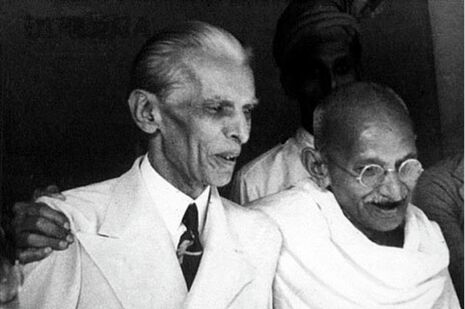
It isn’t possible to know exactly what first attracted the couple to each other. Jatin possessed a starkly different type of intelligence: independent, increasingly radical, restless and proud, he couldn’t have been more different from the men otherwise on offer to Nellie. Jatin’s biography says he “went to tea and soon became a constant visitor. Gradually, he was attracted towards Nellie, which caused some consternation to her parents, for Nellie was their only child and the idea of her marrying an Indian and going away so far from home was anything but welcome.” The book is not a reliable source, though: no doubt it’s tinged with nostalgia, and the romance served well for the myth of Jatin later in life.
Jatin’s father made his opinions known in a letter to Mrs. Gray. “A foreign wife, he felt, would lead to endless difficulties”, says the biography, “He put forward three reasons for his disapproval of the marriage. These were: the difference in religion; the fact that an English girl may not be happy in an Indian home where she would have to fit into a large joint family, that Jatin had no income as he had not yet established a practice at the Bar.” Money was sent onto Jatin’s tutor for his return home, and he obediently boarded a boat for Chittagong, planning on changing at Port Said in Egypt. But instead of continuing onto Chittagong, he had a change of mind: at Port Said, he hopped on the first boat back to England and Nellie, and married, quickly, impulsively, like something from a Jane Austen novel, at a registry office in Royston.
“It’s only… complete nerds like me who know of him as a major figure. Many people in Bengal probably know of him, but outside the region, he’s largely forgotten”, said Professor Chatterji. Jatin gave up his practice to help Gandhi’s Non-Cooperation Movement in 1921, which aimed to resist British rule in India through nonviolent boycotting of British goods and mass rallies. Jatin played a pivotal role in defending Surya Sen, a school teacher turned revolutionary, after the Chittagong Arms Raid Trial of 1930, where Sen and 15 others captured the British European Club in Jatin’s home city. He led successful strikes, especially among Assam plantation workers. Forging a path with Gandhi and Nehru, they would realise their dream of a liberated India together.
“They locked up everyone at some point”, Professor Chatterji remarked, laughing with exasperation. During his time in prison in Darjeeling, he was able to keep up with results of the Oxford and Cambridge Boat Race through listening to the guards’ radio. He heard that Cambridge won by five lengths in 1932, the largest winning margin for three years, in a time of 19 minutes 11 seconds. 1932 was their ninth consecutive victory. Jatin wouldn’t live to see his dream of free India made real. Jatin died, aged 48, on the 23rd July 1933 of a stroke while imprisoned at Ranchi.
They locked up everyone at some point.
It was as much the work of Nellie, his white wife from Cambridgeshire, which gestures towards Jatin’s enduring influence. In 1933, the President-elect of the Opposition was arrested. Only months after her husband’s death, Nellie was chosen in his place. She was the third ever woman, and the second European-born woman to be elected to the position of President. “It just shows the dominance of (Jatin) Sengupta’s group in the party. She was seen as a consensus candidate because she was very popular… at a time of quite deep factionalism in the Bengal congress”, Professor Chatterji told me. In later life, Nellie dedicated herself to the poor of Calcutta and Chittagong until her death in 1973.
Both Jatin and Nellie spent their lives fighting for the ideals and communities of the colonised nation they loved. The unlikely space where this feeling matured was at university, within the heart of British colonial power. They were threatened: Lord Morley’s actions at the end of Jatin’s degree would put at risk future generations of international students, and Jatin’s place to study law at Gray’s Inn. “The conversation in the debates had a particular richness and excitement”, said Professor Chatterji, “Imagine going to Rwanda, and there are maybe 20 of you from different parts of Britain. The Outer Hebrides, from Ireland, Tower Hamlets, just different people, and then suddenly you are thrown together in this setting. What you have in common is that you are aspirational, and your family is aspirational, and probably wealthy. But you don’t have very much else in common. But what you do have is this political situation... People took different views, and that generated a very, very rich debate.” At Cambridge, Jatin and other Indian students weren’t out to persuade the British to quit India. They probably didn’t take themselves that seriously. But it was cleverer than that: for them it was a place to share stories, hopes, and politics for a free India. The discourse was, and remained to be, for themselves. They left and fought back home, realising the audacity of their dream over the next 40 years.
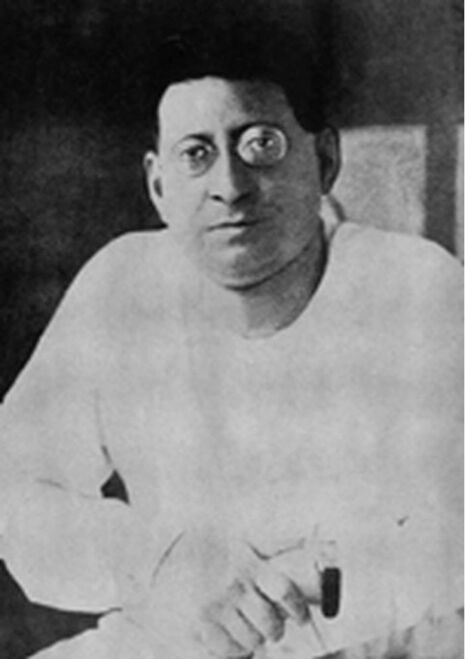
Further information and research by Dr. Teresa Segura-Garcia on Indian students at Downing and Cambridge can be found here.

